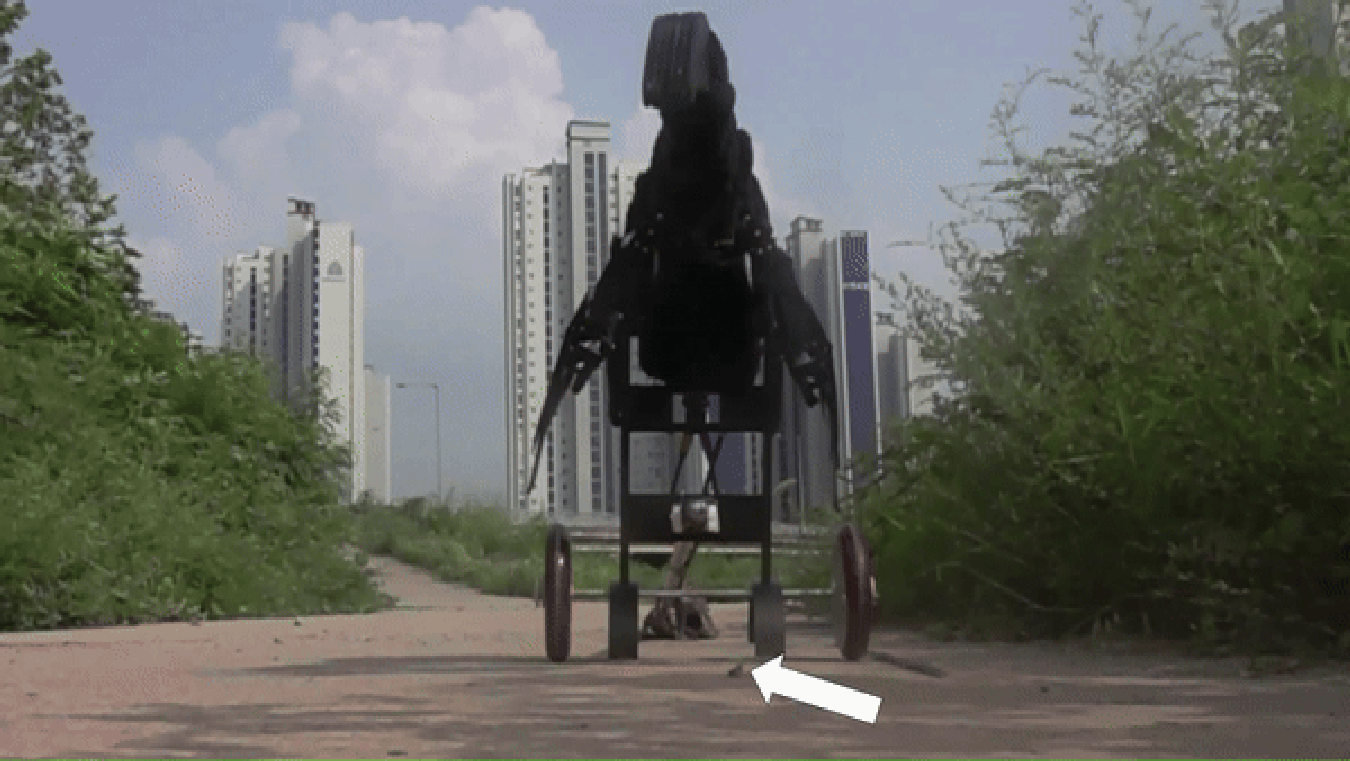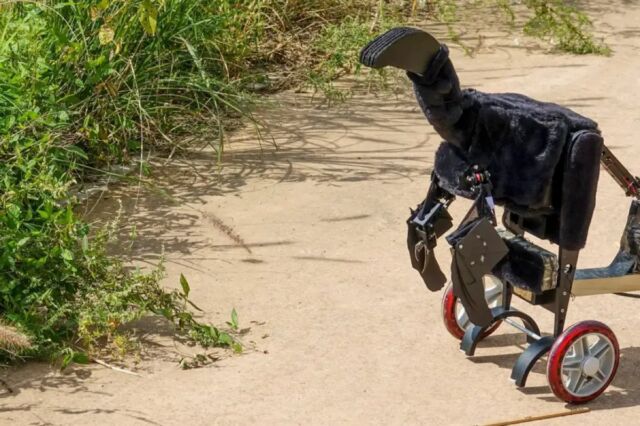

Robo-dinosaur scares grasshoppers to shed light on why dinos evolved feathers
source link: https://arstechnica.com/science/2024/02/robo-dinosaur-scares-grasshoppers-to-shed-light-on-why-dinos-evolved-feathers/
Go to the source link to view the article. You can view the picture content, updated content and better typesetting reading experience. If the link is broken, please click the button below to view the snapshot at that time.
What's the point of half a wing? —
Robo-dinosaur scares grasshoppers to shed light on why dinos evolved feathers
The feathers may have helped dinosaurs frighten and flush out prey.
Jennifer Ouellette - 2/6/2024, 11:13 PM

Scientists in South Korea built a robotic dinosaur and used it to startle grasshoppers to learn more about why dinosaurs evolved feathers, according to a recent paper published in the journal Scientific Reports. The results suggest that certain dinosaurs may have employed a hunting strategy in which they flapped their proto-wings to flush out prey, and this behavior may have led to the evolution of larger and stiffer feathers.
As reported previously, feathers are the defining feature of birds, but that wasn't always the case. For millions of years, various species of dinosaurs sported feathers, some of which have left behind fossilized impressions. For the most part, the feathers we've found have been attached to smaller dinosaurs, many of them along the lineage that gave rise to birds—although in 2012, scientists discovered three nearly complete skeletons of a "gigantic" feathered dinosaur species, Yutyrannus huali, related to the ancestors of Tyrannosaurus Rex.
Various types of dino-feathers have been found in the fossil record over the last 30 years, such as so-called pennaceous feathers (present in most modern birds). These were found on distal forelimbs of certain species like Caudipteryx, serving as proto-wings that were too small to use for flight, as well as around the tip of the tail as plumage. Paleontologists remain unsure of the function of pennaceous feathers—what use could there be for half a wing? A broad range of hypotheses have been proposed: foraging or hunting, pouncing or immobilizing prey, brooding, gliding, or wing-assisted incline running, among others.
Co-author Jinseok Park of Seoul National University in South Korea and colleagues thought the pennaceous feathers might have been used to flush out potential prey from hiding places so they could be more easily caught. It's a strategy employed by certain modern bird species, like roadrunners, and typically involves a visual display of the plumage on wings and tails.
AdvertisementThere is evidence that this flush-pursuit hunting strategy evolved multiple times. According to Park et al., it's based on the "rare enemy effect," i.e., certain prey (like insects) wouldn't be capable of responding to different predators in different ways and would not respond effectively to an unusual flush-pursuit strategy. Rather than escaping a predator, the insects fly toward their own demise. "The use of plumage to flush prey could have increased the frequency of chase after escaping prey, thus amplifying the importance of plumage in drag-based or lift-based maneuvering for a successful pursuit," the authors wrote. "This, in turn, could have led to the larger and stiffer feathers for faster movements and more visual flush displays."
To test their hypothesis, Park et al. constructed a robot dinosaur they dubbed "Robopteryx," using Caudipteryx as a model. They built the robot's body out of aluminum, with the proto-wings and tail plumage made from black paper and plastic ribbing. The head was made of black polystyrene, the wing folds were made of black elastic stocking, and the whole contraption was covered in felt. They scanned the scientific literature on Caudipteryx to determine resting posture angles and motion ranges. The motion of the forelimbs and tail was controlled by a mechanism controlled by custom software running on a mobile phone.
Park et al. then conducted experiments with the robot performing motions consistent with a flush display using the band-winged grasshopper (a likely prey), which has relatively simple neural circuits. They placed a wooden stick with scale marks next to the grasshopper and photographed it to record its body orientation relative to the robot, and then made the robot's forelimbs and tail flap to mimic a flush display. If the grasshopper escaped, they ended the individual test; if the grasshopper didn't respond, they slowly moved the robot closer and closer using a long beam. The team also attached electrodes to grasshoppers in the lab to measure neural spikes as the insects were shown projected Cauderyx animations of a flush display on a flat-screen monitor.
AdvertisementThe results: around half the grasshoppers fled in response to Robopteryx without feathers, compared to over 90 percent when feathered wings flapped. They also measured stronger neural signals when feathers were present. For Park et al., this is solid evidence in support of their hypothesis that a flush-pursuit hunting strategy may have been a factor in the evolution of pennaceous feathers. "Our results emphasize the significance of considering sensory aspects of predator-prey interactions in the studies of major evolutionary innovations among predatory species," the authors wrote.
Not everyone is convinced by these results. “It seems to me to be very unlikely that a structure as complex as a pennaceous feather would evolve for such a specific behavioral role,” Steven Salisbury of the University of Queensland in Australia, who was not involved with the research, told New Scientist. “I am sure there are lots of ways to scare grasshoppers other than to flap some feathers at it. You can have feathers to scare grasshoppers and you can have them to insulate and incubate eggs. They’re good for display, the stabilization of body position when running, and, of course, for gliding and powered flight. Feathers help for all sorts of things.”
Scientific Reports, 2024. DOI: 10.1038/s41598-023-50225-x (About DOIs).
Recommend
About Joyk
Aggregate valuable and interesting links.
Joyk means Joy of geeK

